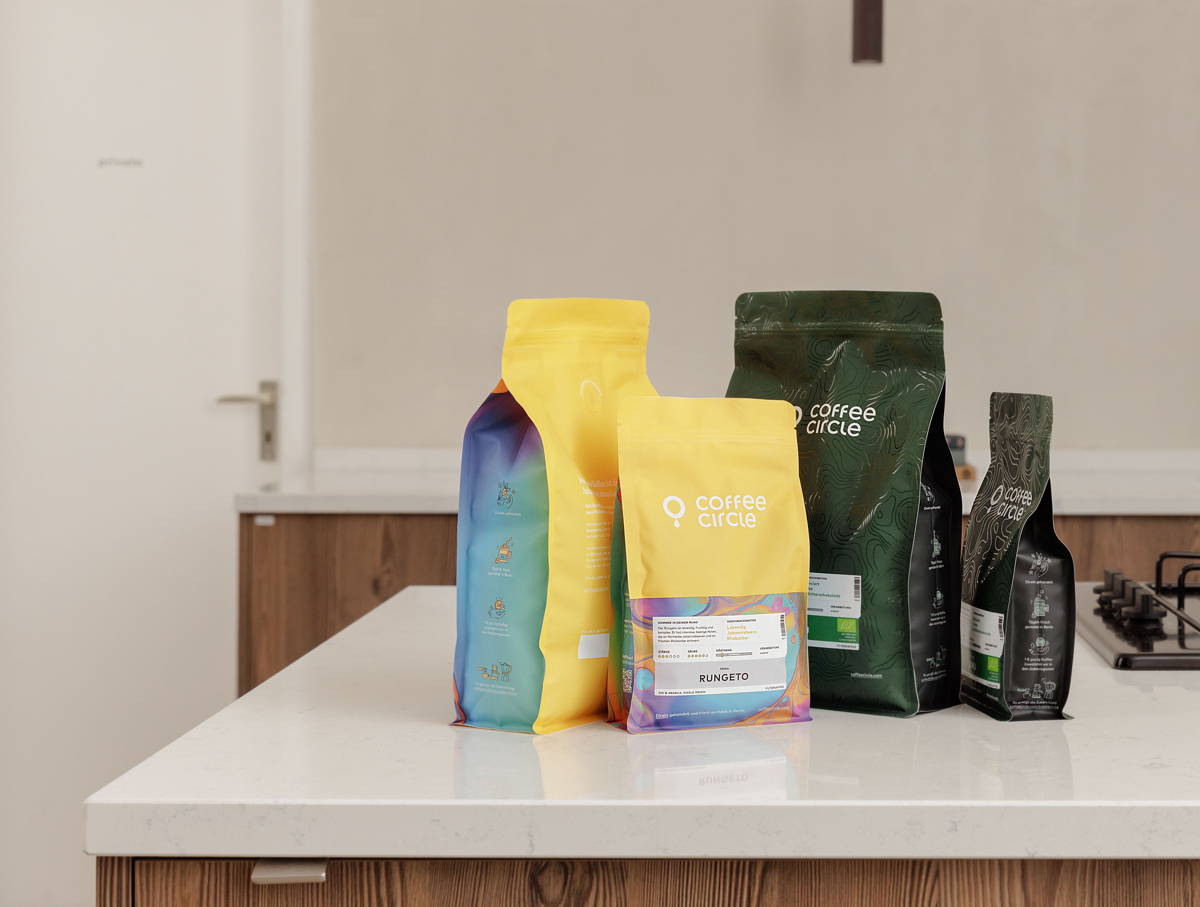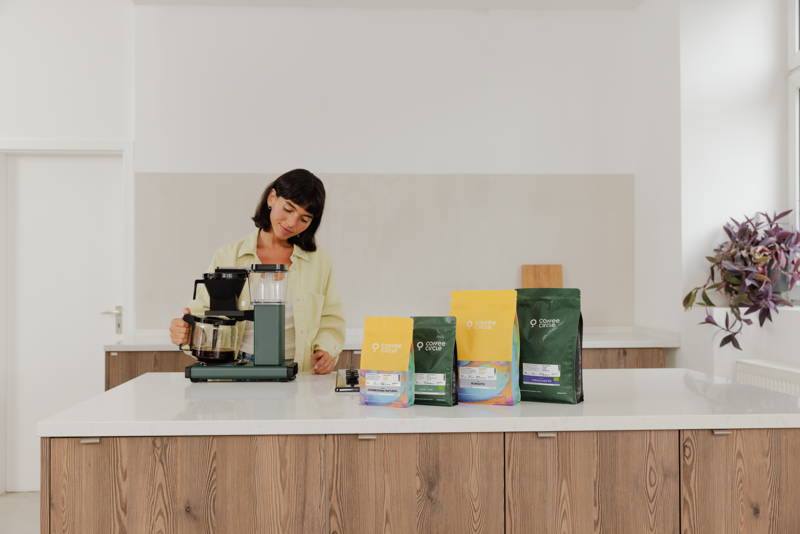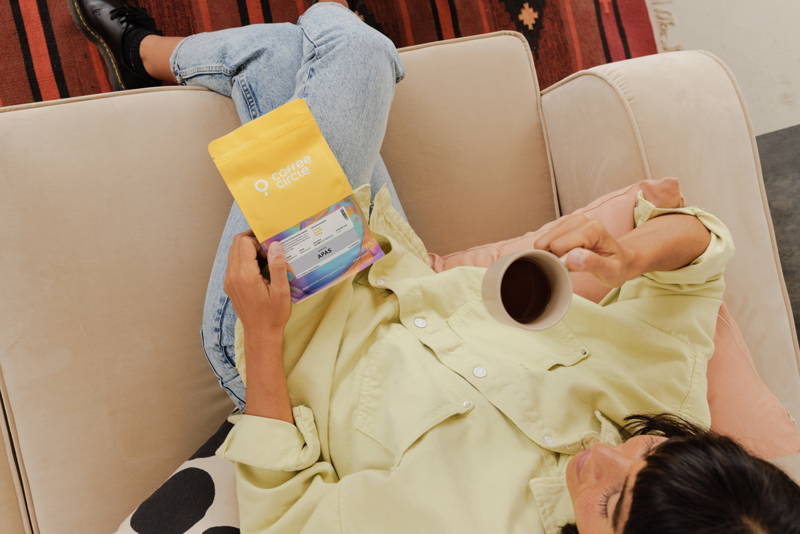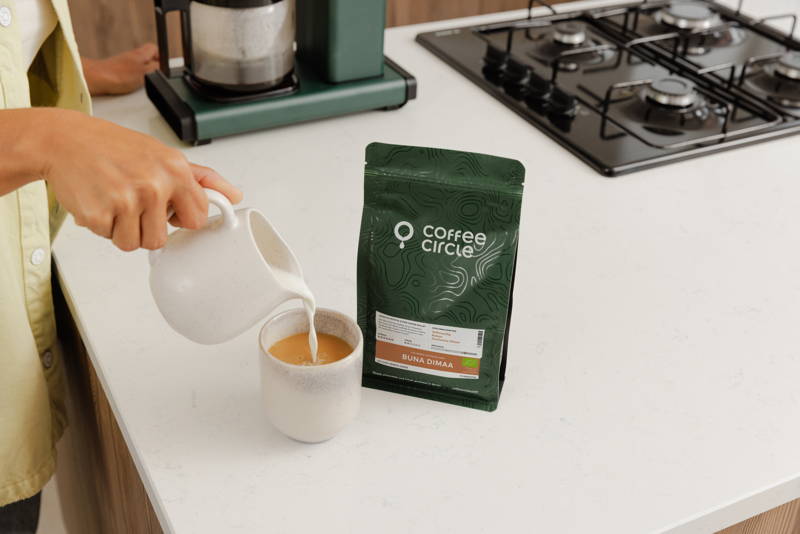
Our coffee packaging
To ensure that your coffee retains its unique taste, it must be packaged well and airtight. But before that, the packaging also has to survive production and transport to your home. This presents us with some challenges that we want to meet in terms of coffee freshness, sustainability and transportability. You can read more about this in this article.
What material is our coffee packaging made of?
After almost two years since we revised our packaging, it is time for us to take another step towards more sustainability. Since August 2023 we are using new coffee bags that are made up of the monomaterial PE. By using only one material, subsequent sorting and recycling is simplified and the need for new resources is reduced. Thus, recycling is simplified for both producers and consumers – you can dispose of the packaging in one piece and throw it in your plastic recycling bin. In general, less energy is used for the recycling process, as the preliminary stage of splitting the different materials is eliminated. The overall recycling process is therefore faster, more efficient, less energy intensive and less expensive. The monomaterial chosen for our packaging is polyethylene, or PE. This plastic is characterized by its resistance to acids, oils and fats and is therefore particularly suitable as a packaging material for food.



What material are the new coffee labels made of?
There is also an update with regard to our coffee labels: The label material, like the bag itself, is made of PE. This means that the label does not have to be removed from the package and disposed of in the paper waste as before, but the entire packaging can go into the plastic recycling can and be fully recycled. Our labels are also much smaller than before and require less material. To help you decide what to buy, new information about our coffees, such as an indication of the degree of roasting and a clear description of the coffee, can now be found on the new labels. If you previously used the color of the label to help you find your favorite coffee, you can still do that, because we’ve kept it the same. On the packaging itself, we print all the important information about us and the coffee, to minimize additional label material.
The new shape
We have also adapted and optimized the shape of our packaging. The new, flat base not only ensures that the packaging stands up better. It also enlarges the interior of the bag and thus reduces the amount of material required. The new rectangular bottoms ensure better packability. This enables more advantageous stacking in the shipping cartons, which means less shipping and filling material is required.
What is the aroma valve in the packaging all about?
Oxygen has a strong influence on the aroma of a freshly roasted coffee. Therefore, the way you store your coffee is crucial for its good taste. If coffee is directly exposed to oxygen, it will only retain its full aroma for 4-6 weeks. That’s why coffee should be sealed after roasting so that as little oxygen as possible gets to it. This is precisely the challenge: coffee forms so-called „roasting gases“ directly after roasting. If the gases cannot escape from the pack, the pack inflates and can burst, at the same time depriving the coffee of its aroma. So to protect the coffee from oxygen on the one hand and allow the roasting gases to escape on the other, a degassing valve is an ideal solution. This way, the coffee can be sealed airtight and retain its aroma for as long as possible. While the resulting gases and oxygen can escape from the pack, no further oxygen flows in.


